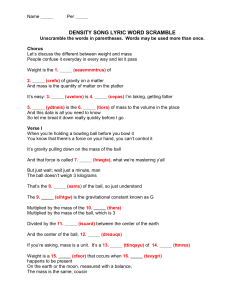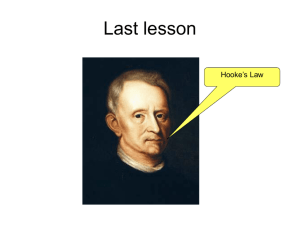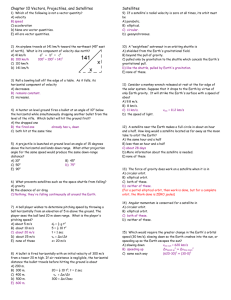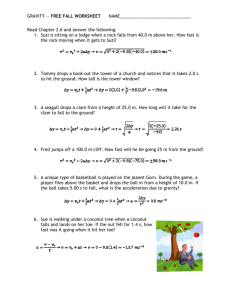PL7_blackholes - UCLA Astronomy
advertisement
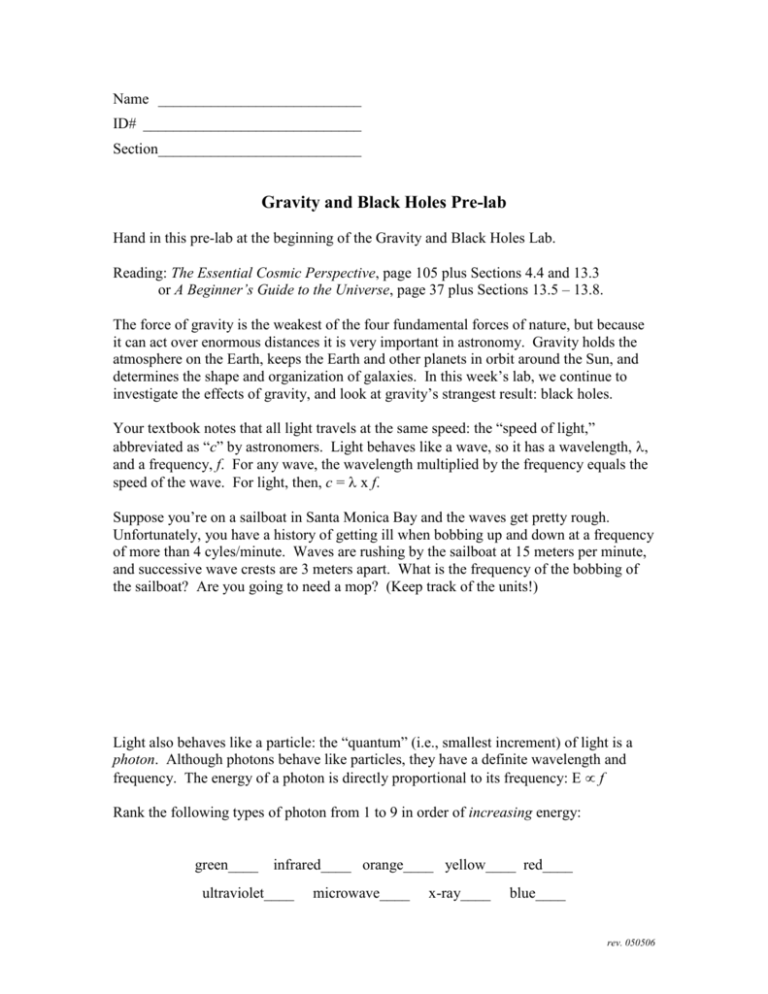
Name ___________________________ ID# _____________________________ Section___________________________ Gravity and Black Holes Pre-lab Hand in this pre-lab at the beginning of the Gravity and Black Holes Lab. Reading: The Essential Cosmic Perspective, page 105 plus Sections 4.4 and 13.3 or A Beginner’s Guide to the Universe, page 37 plus Sections 13.5 – 13.8. The force of gravity is the weakest of the four fundamental forces of nature, but because it can act over enormous distances it is very important in astronomy. Gravity holds the atmosphere on the Earth, keeps the Earth and other planets in orbit around the Sun, and determines the shape and organization of galaxies. In this week’s lab, we continue to investigate the effects of gravity, and look at gravity’s strangest result: black holes. Your textbook notes that all light travels at the same speed: the “speed of light,” abbreviated as “c” by astronomers. Light behaves like a wave, so it has a wavelength, , and a frequency, f. For any wave, the wavelength multiplied by the frequency equals the speed of the wave. For light, then, c = x f. Suppose you’re on a sailboat in Santa Monica Bay and the waves get pretty rough. Unfortunately, you have a history of getting ill when bobbing up and down at a frequency of more than 4 cyles/minute. Waves are rushing by the sailboat at 15 meters per minute, and successive wave crests are 3 meters apart. What is the frequency of the bobbing of the sailboat? Are you going to need a mop? (Keep track of the units!) Light also behaves like a particle: the “quantum” (i.e., smallest increment) of light is a photon. Although photons behave like particles, they have a definite wavelength and frequency. The energy of a photon is directly proportional to its frequency: E f Rank the following types of photon from 1 to 9 in order of increasing energy: green____ infrared____ orange____ yellow____ red____ ultraviolet____ microwave____ x-ray____ blue____ rev. 050506 Isaac Newton devised the thought experiment seen at right in an illustration from his book in 1686. Imagine the Earth (C) with a cannon atop a high mountain (V). Fire the cannon horizontally at a low speed and the ball falls, landing at D. Progressively higher and higher speeds lead to the ball falling and landing at E, F and G. Fired at a great enough speed, the ball will return to the cannon (!) – this is called orbit. How can the ball fall and fall and fall yet never hit the ground? Why do you suppose orbiting is sometimes called “free fall?” For the next questions, try your hand at orbits with this Web animation: http://www.physics.purdue.edu/class/applets/NewtonsCannon/newtmtn.html What speed (in mph) is required for the cannonball to land at F: _____________ What speed is required for the ball to make a circular orbit and return to V:___________ Increase the firing speed from the circular orbit speed and fire the cannon. What is the shape of the orbit at this higher speed? 2



